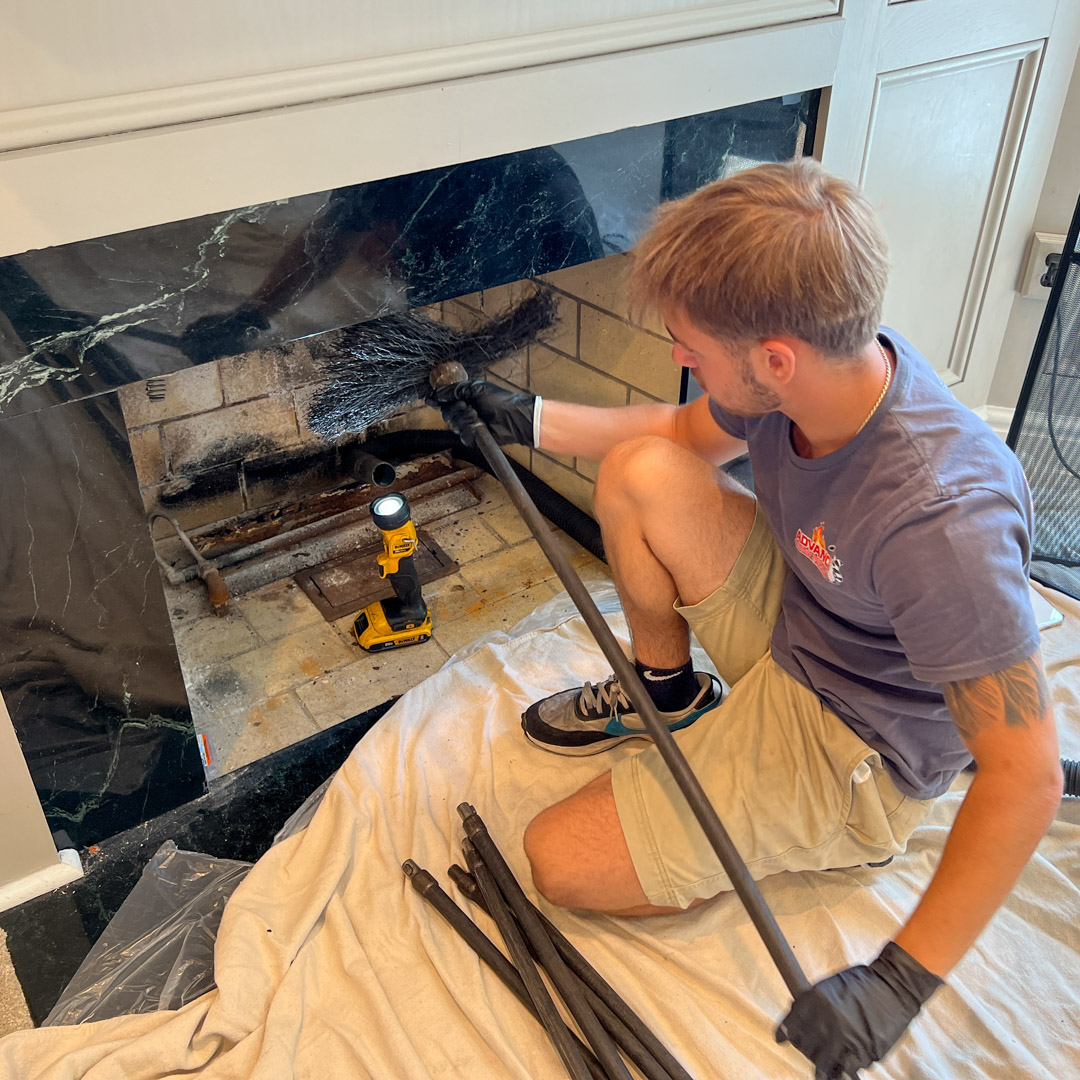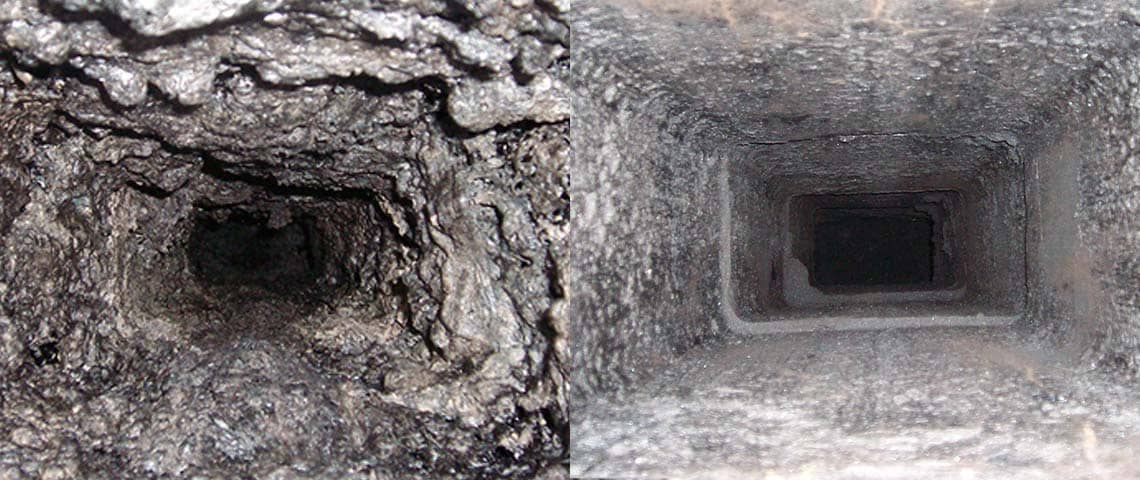Keep Ahead of the Contour: Advanced Chimney Maintenance San Jose Techniques Revealed
Keep Ahead of the Contour: Advanced Chimney Maintenance San Jose Techniques Revealed
Blog Article
Professional Tips for Effective Smokeshaft Maintenance You Need to Know
Smokeshafts function as crucial components in many homes, providing heat and convenience. Nonetheless, guaranteeing their proper maintenance is commonly forgotten till concerns develop. Understanding the ins and outs of smokeshaft treatment can be the key to avoiding expensive repair work and protecting your home and household. From the significance of routine evaluations to safe operational methods, a thorough strategy to smokeshaft upkeep is vital. Let's explore expert tips that can assist you keep your smokeshaft in optimum problem for several years ahead.
Significance of Regular Inspections
Routine assessments of smokeshafts are essential for guaranteeing their security and performance. Smokeshafts play an important duty in airing vent out dangerous gases and maintaining appropriate air movement in a home. With time, creosote build-up, debris, and architectural damage can happen within the smokeshaft, posing serious dangers such as smokeshaft fires or carbon monoxide gas leaks.
During a smokeshaft inspection, educated specialists evaluate the condition of the smokeshaft, searching for any signs of damages, obstructions, or degeneration. They also examine the stability of the flue, smokeshaft liner, and smokeshaft cap to ensure every little thing remains in proper functioning order. By identifying and dealing with problems early, costly repair work or potential dangers can be stayed clear of.
Normal examinations not just assist in keeping the safety of the smokeshaft however also add to its general efficiency. A clean and well-maintained smokeshaft operates better, guaranteeing correct air flow and reducing the threat of interior air pollution. Scheduling annual smokeshaft inspections is a proactive action that home owners can take to secure their residential property and loved ones.
Cleansing Techniques and Frequency
Preserving the security and effectiveness of a chimney entails not just routine evaluations however additionally executing appropriate cleaning techniques and identifying the optimal frequency for cleansing. Smokeshafts must be cleaned by a professional chimney move at the very least yearly, also if they are not frequently utilized. Nonetheless, if the smokeshaft is utilized regularly, particularly with wood-burning ranges or fire places, it might need more frequent cleanings to avoid the accumulation of creosote, a highly flammable compound that can lead to chimney fires.
The cleaning procedure normally entails removing creosote, soot, and debris from the smokeshaft flue, smoke chamber, and firebox. Professional chimney sweeper usage specialized devices, brushes, and vacuums to guarantee comprehensive cleaning without creating a mess in the home. Additionally, they evaluate the chimney's structure for any kind of signs of damage or use that may need repair work. House owners ought to never forget chimney cleaning, as it is vital for preserving a secure and practical smokeshaft system - Chimney Maintenance San Jose. Normal cleanings not only reduce the threat of smokeshaft fires but likewise boost the chimney's total efficiency and durability.
Addressing Smokeshaft Leaks

When resolving chimney leaks, extensive assessment and prompt fixings are vital to avoid water damages and maintain the architectural stability of the smokeshaft. Leakages in a chimney can cause serious issues such as mold and mildew development, degeneration of the smokeshaft framework, and also prospective fire hazards. To properly attend to smokeshaft leaks, begin by inspecting the chimney cap, crown, blinking, and masonry for any type of next page indicators of damage look here or wear. Smokeshaft caps should be safely in position to stop water from getting in, while the crown and flashing must be undamaged and correctly secured. Any type of cracks or spaces in the stonework need to be repaired immediately to stop water seepage. Additionally, think about waterproofing the smokeshaft to give an additional layer of defense against moisture. Normal maintenance and assessments can aid detect and deal with chimney leaks early, saving you from expensive repairs and making sure the safety and security and long life of your smokeshaft.
Understanding Creosote Accumulation
To recognize the potential threats of creosote accumulation in chimneys, it is vital to identify its development procedure and effect on chimney efficiency. Creosote is a black or brown tar-like material that collects inside chimney systems when timber or fossil gas are melted. As smoke increases through the chimney, it cools and condenses, bring about the formation of creosote, which abides by the i was reading this chimney walls.

Normal chimney evaluations and cleansings by a specialist chimney sweep are essential in stopping creosote build-up and making sure the risk-free operation of your chimney system.
Safe Operation Practices
Applying proper security procedures is necessary for the secure and efficient operation of smokeshaft systems. When making use of a fire place or wood-burning range, it is vital to comply with particular safety techniques to avoid potential hazards. Always make certain that the smokeshaft is properly evaluated and cleaned up routinely to get rid of any type of creosote build-up, which can lead to chimney fires. In addition, utilize a sturdy screen or glass door before the fireplace to stop ashes or sparks from triggering a fire and escaping in your home. It is additionally essential to never ever overload the fireplace with too much amounts of timber, as this can lead to overheating and possible structural damages.
Moreover, ensure to only shed experienced timber in your fire place, as green or wet timber can produce more creosote and trigger hazardous smokeshaft clogs. Never ever leave a fire unattended and always make sure the fire is totally snuffed out prior to going to bed or leaving the home. By complying with these secure operation methods, you can appreciate a cozy and cozy fire while ensuring the safety of your home and loved ones.
Verdict
Finally, preserving your chimney is essential for guaranteeing its safety and security and efficiency. Normal inspections, appropriate cleaning strategies, attending to leakages, managing creosote accumulation, and adhering to risk-free procedure methods are essential aspects of smokeshaft maintenance. By remaining on top of these tasks, you can avoid possible threats and extend the lifespan of your chimney. It is essential to focus on chimney upkeep to keep your home cozy and safe throughout the chillier months.
Over time, creosote build-up, debris, and architectural damage can happen within the smokeshaft, positioning severe risks such as smokeshaft fires or carbon monoxide leaks.
If the smokeshaft is made use of on a regular basis, especially with wood-burning ovens or fireplaces, it might require more regular cleansings to stop the accumulation of creosote, a very combustible substance that can lead to chimney fires. (Chimney Maintenance San Jose)
To recognize the possible hazards of creosote accumulation in chimneys, it is necessary to identify its development process and effect on smokeshaft efficiency. As smoke rises through the smokeshaft, it condenses and cools, leading to the formation of creosote, which adheres to the chimney wall surfaces.
Always make sure that the smokeshaft is properly inspected and cleaned up routinely to eliminate any type of creosote accumulation, which can lead to chimney fires.
Report this page